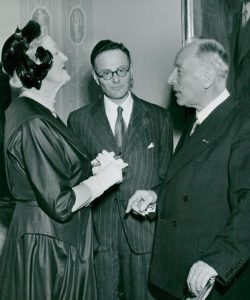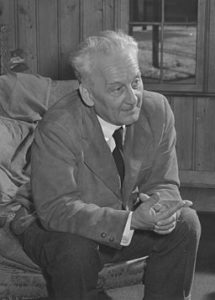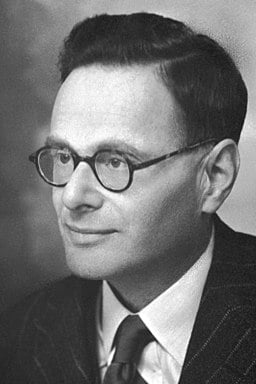Ask any first year med student if they remember the Krebs cycle and chances are you’ll receive a long groan in reply.
One of the most consequential reaction processes in biochemistry, the Krebs cycle explains a series of energy-producing reactions that take place in most organisms that require oxygen.
The process—also known as the citric acid or tricarboxylic acid cycle—forms a part of the aerobic cell metabolism process where the molecular building blocks are created for a range of important processes, including, according to Science Direct, “the synthesis of fatty acids, steroids, cholesterol, amino acids for building proteins, and the purines and pyrimidines used in the synthesis of DNA.”
Each and every one of my patients has a Krebs cycle, but I’m often struck by the imbalance between how important this was in our medical education, and how freakishly infrequently it comes into play in the clinical care we provide.
To almost all who haven’t studied medicine or biochemistry, that description generates a response that med students themselves usually replicate in the long process of trying to memorize it.
First introduced in M1, and required for M2 boards, the Krebs cycle is a notoriously tricky, often-memed process that becomes virtually irrelevant on a clinical level. Some have even suggested it as illustrative of unnecessary rigidity within modern medical education.
“The Krebs cycle is currently running in all of us,” Dr. Fred Pelzman wrote for MedPage Today, last October, “churning and turning away, generating energy for all the activities our bodies need to do to get us through the day, from moving muscles, to digesting food, to pumping blood, to excreting waste, to moving air, to thinking.
“Each and every one of my patients has a Krebs cycle, but I’m often struck by the imbalance between how important this was in our medical education, and how freakishly infrequently it comes into play in the clinical care we provide.”
Despite the long, agonizing role it plays in their lives for two years, few of the students who learn the process know the story of its discoverer, Sir Hans Adolf Krebs.

Involving an escape from Nazi Europe, and including settings as rich as a dinner party with Albert Einstein and a lab built above an old Sheffield cinema, consider the story behind the Krebs cycle as another loop needing to be closed.
From Hildesheim to Sheffield
Krebs was born in Hildesheim, Germany in 1900; the second son of a prominent local ear, nose and throat (ENT) surgeon. Briefly serving in the Imperial German Army at the end of World War I, he began his medical studies at the University of Groningen in 1918, moving to Freiburg University the following year.
At any time Krebs could have branched off into a much more lucrative medical career, but his dedication to research and the pursuit of knowledge was clear.
After completing his medical studies in 1923, and completing an unpaid clinical residency in Berlin the following year, Krebs left the medical practice to study and research biochemistry. In 1925, he scored his first paid research position in the lab of Otto Warburg, a 1931 Nobel Prize in Medicine winner for his work on the metabolism of tumors.
The pair had been connected by a friend, who had met Warburg during a dinner party in Einstein’s Berlin house.
With economic conditions still brutal in post-war Germany, Krebs did it tough as a poorly-paid researcher in both Berlin, and back in Freiburg in the early 1930s. Research work would often be worked around his hospital work schedules.
“At any time Krebs could have branched off into a much more lucrative medical career, but his dedication to research and the pursuit of knowledge was clear,” Willcocks wrote.
The proof was also in the pudding. By 1932, Krebs and student Kurt Henseleit had discovered the urea cycle, and a chemical solution that allowed the study of blood flow in arteries. His reputation soared, internationally.
In March 1933, Adolf Hitler and the Nazis came to power in Germany. Just a month later, Krebs—who was Jewish—was dismissed from his research role in Freiburg in a state law that saw “the removal of all non-Aryans and anti-Nazis from professional occupations.”
By July 1933, the acclaimed physician-turned-biochemist accepted a lab demonstrator’s role in Cambridge University’s biochemistry department, escaping Nazi Germany on the cusp of the Holocaust. He bought all his lab equipment with him.
Enticed by a larger lab and better salary, Krebs took a job as a lecturer in pharmacology at the Sheffield Medical School, at the University of Sheffield, in 1935. The gritty English industrial city would be his home for “19 happy years,” and the place where the Krebs cycle was born.
Discovery, and legacy
Krebs’ own work on the citric acid cycle wouldn’t have been possible without that of Albert Szent-Györgyi.
In the early 1930s, the Hungarian identified crucial steps in what would later become the Krebs cycle. By 1937, he was awarded the Nobel Prize in Physiology or Medicine “for his discoveries in connection with the biological combustion processes, with special reference to vitamin C and the catalysis of fumaric acid.”
Szent-Györgyi would later play a prominent role in Hungary’s anti-facist resistance movement, ending the war on the run from the Gestapo. He’d move to the United States in 1947, where he’d establish the Institute for Muscle Research in Massachusetts.
His luck was both personal – he was a Jew who escaped Nazi persecution – and professional. But luck aside, Krebs was also … a hard-working and dedicated scientist and one of the world’s most eminent biochemists.
The majority of the citric acid cycle work that would eventually nab Krebs his own Nobel Prize in 1953 was done in the two years before Szent-Györgyi received his.

“Krebs suspected that oxaloacetic acid might react with pyruvic acid to form citric acid, thus forming a complete cycle for the combustion of foodstuffs,” Willcocks wrote.
“He admitted that, by another stroke of luck, his discovery of the [urea] cycle alerted him to the possibility of a cyclical process, and his hunch was right … [t]he Krebs cycle was born.”
Beyond his famous cycle, Krebs was also the first head of the Sheffield University’s Department of Biochemistry in 1938, which exists today as the Department of Molecular Biology and Biotechnology.
He had a prominent role heading up a state research for cell metabolism—its massive lab was located above a cinema and known by Sheffielders as ‘Krebs’ Empire’—before a later move to Oxford University to become the Whitley Professor of Biochemistry. Knighted in 1958, Krebs died in 1981, aged 81.
Recognition of Krebs work extends far beyond his ‘dreaded’ cycle. The Hans Krebs tower hosted Oxford’s Biochemistry Department until it was demolished in 2014, while the Krebs Institute was founded back at Sheffield University.
Since 1990, the prestigious Sir Hans Krebs Lecture and Medal has been given, and taken, by those making the biggest strides in “biochemistry, molecular biology, or related sciences.”
“Sir Hans Krebs always considered himself to be a lucky man,” Willcocks wrote.
“His luck was both personal – he was a Jew who escaped Nazi persecution – and professional. But luck aside, Krebs was also, right up until his death in 1981, a hard-working and dedicated scientist and one of the world’s most eminent biochemists.”



